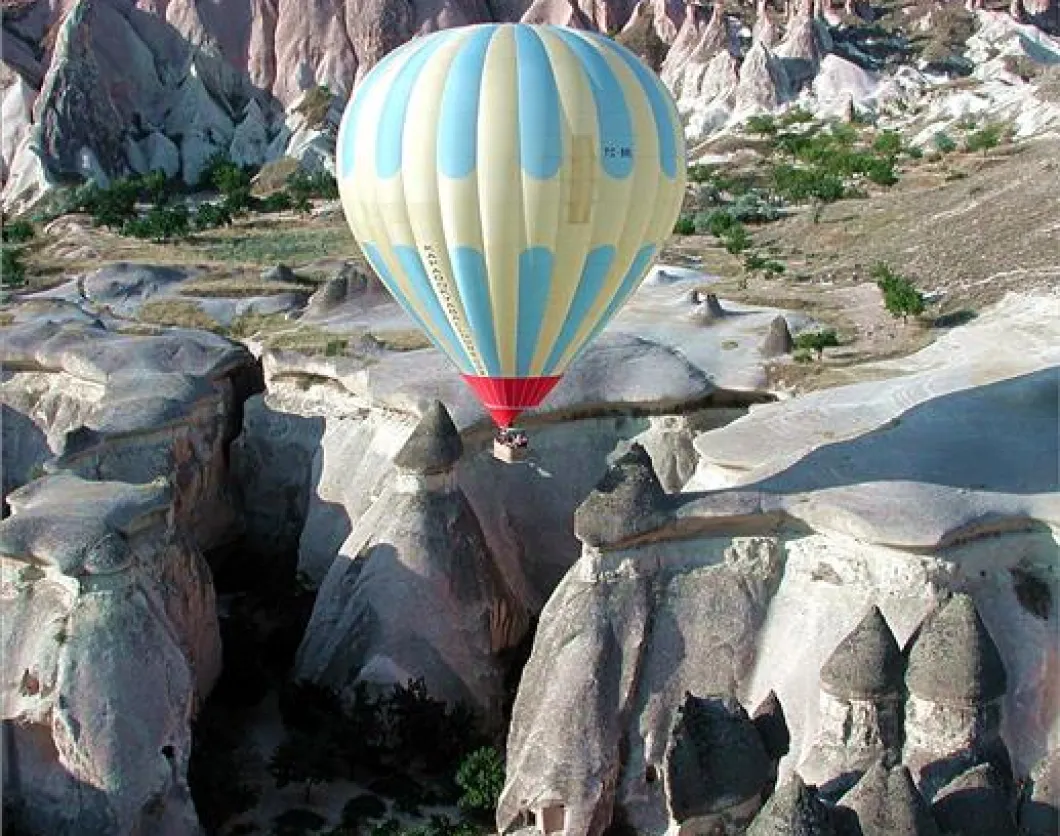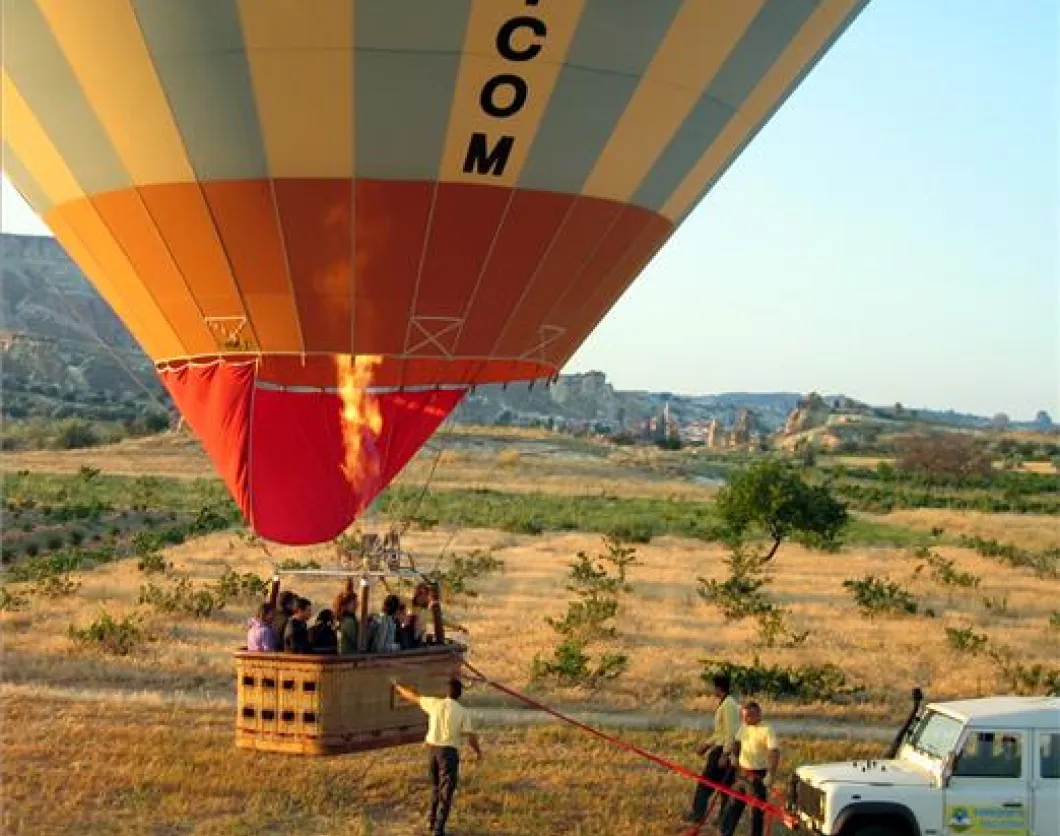If judged solely by average flying time, the cost of hot air ballooning is indeed a travel luxury few would consider sampling. But measured in terms of an uncommon experience with a soaring birds’ eye perspective over our planet’s natural and cultural treasures, a carefully-selected balloon trip is a bargain.
I moved from skeptic to convert in 2001 during a Kapadokya Balloons (KB) hot air balloon ride over Cappadocia’s sculpted valleys and deep narrow ravines in Central Turkey. I returned to the area in 2008 for a second ballooning experience that was even more exhilarating and informative, my most unique sightseeing tour among many travel adventures. KB is the only Cappadocia-based operator that practices free-style ballooning, usually covering about 15 km/10 miles per trip. For less money, others pretty much go straight up and dangle in one area for about 45 minutes before descending to the same landing spot, but the experience is understandably less dramatic, photogenic or informative.
Picked up well before dawn, we headed for the day’s chosen launch field about an hour from our hotel. The take-off field varies according to wind direction, with considerable skill required to judge the best possible flight path over such a deeply-chiseled landscape. Flights launch early when the gentle stable wind conditions are most predictable. This time of day is ideal for photography with splendid colors, shadows and contrasts.
Our veteran pilot, Lars-Eric More, has 25 years of ballooning experience. He and his partner, Kaili Kidner, one of the world’s top woman pilots, have operated the company for 19 years. On this occasion, Kaili drew the tough job of leading the ground crew – not only responsible for setting up and getting us safely and smoothly into the air but then performing the challenging task of tracking us with two vehicles, a two-way radio and a basket trailer on rough roads and tracks until the landing spot was selected.
At the designated launch site, our crew made quick work of unloading the wicker basket from the trailer and laying out 27 metres/90 feet of balloon, ropes and hot air paraphernalia. Following a seamless launch, tranquility enveloped our basket as we entered the perfect classroom for erosion studies! Lars informed us that it is Mother Nature’s soft breath that is responsible for defining our route over this hauntingly beautiful countryside. The pilot can only guide the balloon up and down, not sideways.
When not pointing out landmarks and talking about the geological formations, history and wildlife of the area, Lars surveyed his surreal realm with quiet contentment. From time to time, he pulled a lever, sending a huge tongue of flame blasting upward into the balloon cavity. This adjusts height up or down. At some points we were deep inside a weather-sculpted valley literally skimming the tops of neatly planted pocket orchards, villages and volcanic fairy chimneys; at other times Lars shot the flame and we gracefully rose over a canyon lip.
An hour and a half passed all too quickly, and soon Lars and Kaili exchanged crucial information by radio about the best place to land. Soaring as high as the Egyptian vultures that cruise the area, we observed the two vehicles and trailer careening along beneath us looking like Match Box toys.
Lars spotted his unlikely landing pad, a patch of scrub and rocks not far from a rough track where the vehicles will be put to the test. We descended ever so slowly while our pilot intensely worked the levers to release just the right amount of air from the balloon. The ground crew surrounded the basket, bobbing above the ground, and grabbed with practiced hands for the dangling ropes to stabilize the touchdown. After making less-than-graceful exits over the basket edge, we watched with traditional champagne glass in hand while our enormous bird was deflated and stowed for another day.
Why is Cappadocia Special?
Cappadocia’s geological foundation was laid down three million years ago by the volcanic eruption of two local mountains that covered the plateau deep in volcanic ash. Wind and weather have eroded this now solidified rock into pillars, cones, and “fairy chimneys” in a rainbow of colors. Since ancient times, people have hollowed out dwellings in this soft rock. In particular, the early Christians created over 600 cave churches, chapels and monasteries, some of which are still well preserved. There are also entire underground cities into which men, women, children and animals could retreat from waves of enemies passing through the area well into the Middle Ages. Few people occupy these dwellings today because many are designated for preservation under the UN World Heritage Site program, and because government programs have provided safer, modern family housing options elsewhere around the plateau.
By Alison Gardner
Editor/journalist, Alison Gardner, is a global expert on nature-based vacations and cultural/educational travel.










